You’ve finished your beginners’ course – but what’s next? Andrew Smith explains the progression options there are, and where to find them
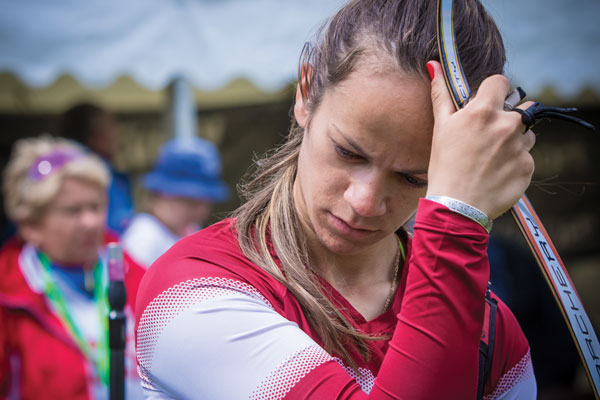
Some clubs will have a defined program and coaches on hand to help you progress, but many more don’t
You’ve completed your beginners’ course, bought your equipment and started to feel like you belong on the shooting line. Some clubs will have a defined program and coaches on hand to help you progress, but many more don’t. So for those that are left to fend for themselves, where is the best place to look to get help?
Decide what you require from coaching
The biggest mistake that most archers make, probably because time is always at a premium, is to look for quick fixes and shortcuts. There are no silver bullets to start shooting well; it requires planning and some regular training. You will find that the higher you wish to progress up the ladder, the more of your time will need to be devoted to your archery.
Don’t forget to keep fit, train the mind, and plan
Even these days, when sports science is at the forefront of peak performance, having a plan, setting goals, training the mind and keeping fit is only given a cursory nod at the lower levels. At the end of the day, if you are fit and you are working towards a goal, you will be more in control of your emotions and you will shoot better, especially during those high-pressure moments or when you are feeling under the weather.
Getting help in this area is more difficult, but books like Understanding Winning Archery and With Winning in Mind are good places to start. Help can also be found in the most unusual places; many of the techniques used in sport have been practiced in the business world for many years, so don’t dismiss help from this quarter – it will not be archery specific, but the skill sets are easily transferred.
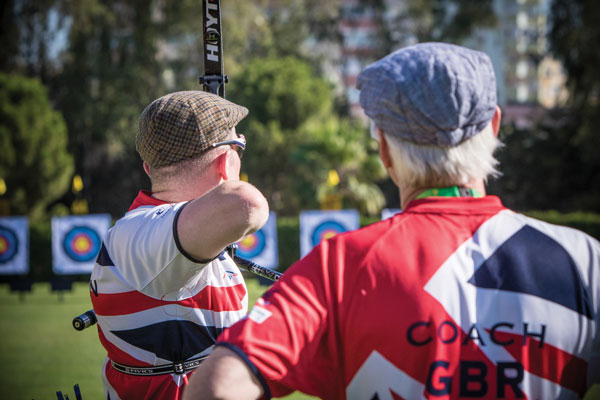
Coaches are available from club to country level, so ask your club or county committee about getting in touch with one in your area
Which shooting technique is best
We have been shooting bows and arrows for thousands of years. We load an arrow, pull the string back, let go and the arrow goes where we have aimed it. So, if it’s that simple, why do we all find it so hard to consistently put all our arrows where we think we are aiming? The basic explanation is that we are not very good at doing repetitive tasks; we make mistakes and do things differently from shot to shot. To get over this we must train ourselves to shoot consistently. The key word here is ‘consistently’ – we have to endeavour to do the same thing from shot to shot. It does not necessarily have to be what some would call perfect form, but it must be consistent.
There is no one correct way to shoot, but the basic building blocks you have already learnt are a good platform to work from. You will find that quite a few international coaches have developed shooting styles and systems to assist archers in achieving a consistent form. Some are new concepts, others are older or adaptations of earlier systems. To get the benefit of these systems you must follow the complete program – it is no good just taking what you think are the best or easy bits in isolation.
We are all different in the way we shoot, our physical makeup and how we get the best out of ourselves, so there is no one style or philosophy that fits all. Your goals and ambitions will determine the path you follow. All shooting systems have a degree of flexibility, but be warned, robotically following a system without fully understanding the philosophy and mechanics is no guarantee of success.
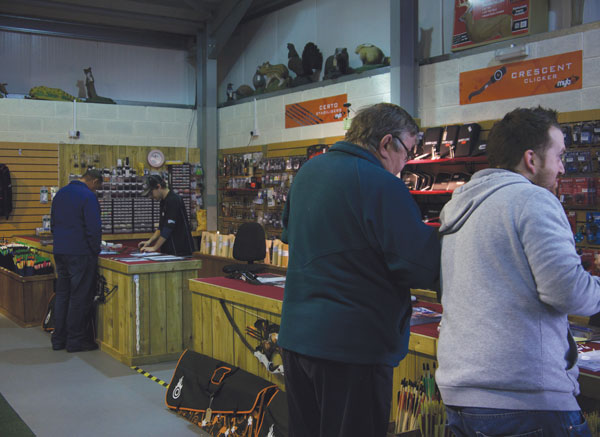
An archery pro-shop can be a good port of call if you’re having equipment troubles – some can even help with coaching
Main types of help
Club / County / National Coaches | Clubs, counties, regions and countries all have coaching networks that can be called upon by archers to help them progress – you just need to ask. If your club is not able to help, your county or region should be able to point you and others in your club in the right direction. This might be in the form of a one-off session with a county coach, or regular coaching sessions. Before asking for help archers should evaluate what help they require. Is it just to fix a minor issue (I call this ‘firefighting’), or a long-term commitment to help them to reach their goals? Proper coaching is ongoing and requires a two-way commitment from both the coach and the archer. The main question an archer should ask when selecting a coach is, “Will this coach get me to where I want to go (or part way)?” The coach, in turn, must be satisfied that the archer will be fully committed and trust the path laid out for them.
Archery Shops | Good archery shops are run by archers with many years of experience behind them, and they have all the facilities and the expertise to help archers improve their equipment setup, arrow selection, and shooting form. Face-to-face contact and the opportunity to discuss issues ranging from form to equipment is invaluable. Many a time shop staff can solve an archer’s problem, rather than hypothesise. It is no coincidence that top archers value the help and support they receive from their favoured dealer. The advice and help on offer always translates into additional points out on the field. Facilities and the services offered are varied, but if you remember that this is a day job, no different to other skilled trades, pro shop staff can save you a lot of time and money as they have already weeded out the folklore and strange ideas that seem to embed themselves in our sport, which are often accepted as real facts by unsuspecting archers.
Books and Magazines | Books and magazines may seem old fashioned to the younger generation, who instead favour the internet, with its video content and instant answers. But we should never overlook the capacity of printed material to enhance our understanding of all aspects of archery from how to shoot, to equipment maintenance, to archery history and those little tips and reminders.
Most of the established shooting systems being practised by international archers today are available in print. The value of a book is that it sets out the coach’s philosophy and shooting style in the correct order. This way you build up a picture of the shot correctly, and have a better chance of replicating what the author intended. The downside is that some are very technical and difficult to understand and get right. Magazines cover a wide range of topics that are of interest to archers and add additional updates, reminders and information to help archers progress.
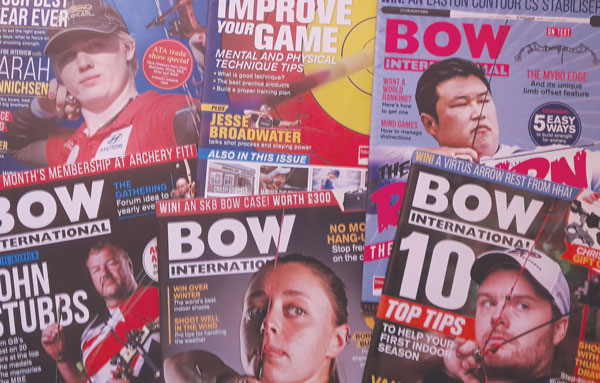
Books and magazines can be helpful sources of information on everything from form to competitions
Books and magazine articles are a reliable source of information, especially if your only option is self-help. You can decide which book will work for you based on what you believe is right, the level you want to shoot at, and the time you have available. If you also get a coach, it goes without saying that both of you need to be working on the same principles.
Internet | The internet can be a great source of information; it allows you to watch videos, read forums and technical articles, and build up an overall understanding of how to shoot and what work needs to be done. It can also provide up-to-date information to supplement books or to help archers get a better understanding of their coaches’ intentions. That said, the internet can lead you in the wrong direction. By this I mean that all the content that is available for free is unregulated, so most of the time you have little idea if the information provided is accurate. Beware of the person that shouts the loudest.
The biggest benefit of the internet is the availability of video content, on everything from top archers performing at major tournaments to coaching methods and set-up tips. These videos, particularly of the top archers, allow you to see the end game you’re working towards.

The internet can be a great resource, and is particularly good for video, but not everything on there has been quality checked
The future
While books, magazines and the internet are all great sources of information, there is no real substitution for face-to-face help. It provides immediate two-way communication and both the coach and archer know they are working on the same page. Problems, miscommunications, and ideas can be discussed and sorted out quickly.
As good coaches at the higher levels are thin on the ground, advances in mobile phones and communications mean that remote coaching, either in real time or offline, is now possible. There are some very good low-cost video analysis coaching apps available such as Coach’s Eye, and these allow archers and coaches to remotely evaluate shooting form and plan training schedules.
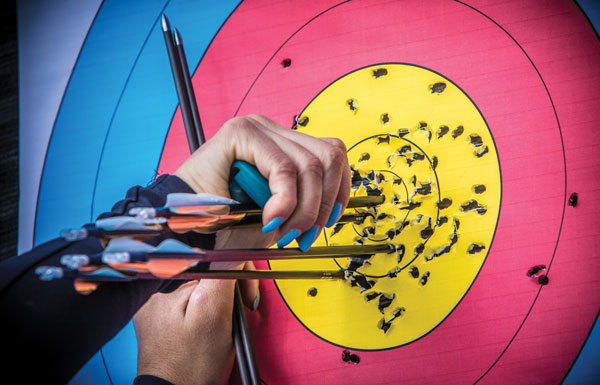
In the end, there’s no substitute for good practice when it comes to improving your results
Coaches and archery pro shops have yet to be replaced by the internet, as many of the problems archers experience are down to misunderstandings, the poor selection of equipment and incorrect set-up. Arrows are a good example of this; what many consider bow tuning is in fact bow set-up to get wrongly spined shafts to fly straight. These compromises lead on to all sorts of technical and form issues because in many cases your equipment is working against you, especially when you need the help the most (during those not-so-perfect shots).
All the media mentioned in this article has a part to play in helping you understand our sport and how to get better at it. Filtering out the good from the bad is the key issue. Doing so will save you from wasting time following the wrong path and having to un-learn bad habits. In the end though, there is no substitute for actual shooting practice, being able to figure out what a good shot feels like and then working out in your own mind how to replicate it time after time, whether you have a coach to call upon or not. Never forget that the ultimate responsibility for your progress rests with you alone.
This article originally appeared in the issue 121 of Bow International magazine. For more great content like this, subscribe today at our secure online store www.myfavouritemagazines.co.uk


A well written and a thank you for a truly good article that I am passing along to my Illinois and Wisconsin S3DA archers and parents.
Archery is a life sport.
Having said this archers are losing their way in some respects in misguided internet coaching. However, tech should not be abandoned I have found myself helping S3DA archers and coaches with a app called Coaches Eye.